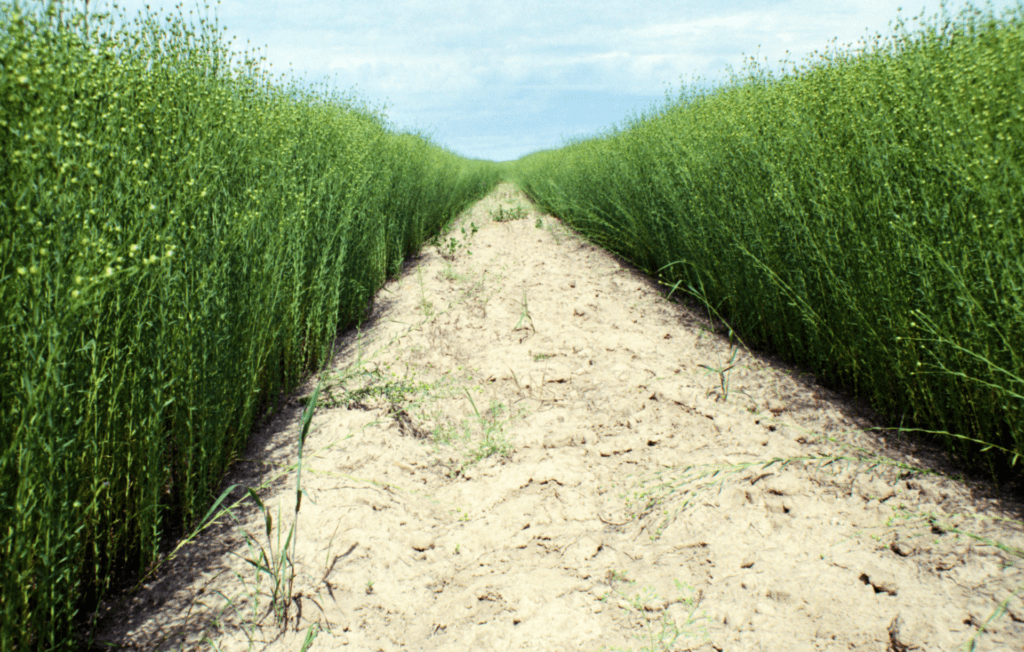Cultivation of flax has been booming in recent years, but just as the sector was taking off, extreme rainfall has slashed yield forecasts for farmers across the country.
The torrential downpours of the last few weeks, including the deadly floods across Belgium, have forced flax growers to revise yield expectations downwards, according to the Flemish information centre for agriculture and horticulture (VILT).
“It’s possible that this year we’ll have a fall in production of tens of percent,” flax grower Patrick Michiels told VILT.
Michiels grows flax on 350 hectares in Wallonia and Flanders, but due to the heavy rainfall in the second half of July, a lot of his crop has fallen flat onto the ground.
“[This falling] means loss of quality and it also complicates the harvest,” said Michiels, who added that fellow growers in the Liège region aren’t faring much better, and many have lost entire flax fields due to river flooding.
“There, rain and mud have taken the flax and there is nothing left of the crop,” Michiels said. “We, too, have fields that have been flooded, so the machines can't get onto the land.”
The loss of crop could be even higher than anticipated due to the severe weather in Wallonia, says Jan Sijnave, director of the Belgian Flax Association.
“Three quarters of the Belgian flax crop is located in Wallonia and is also concentrated in the strongly affected areas of the loam region and Condroz between Wavre and Liège,” said Sijnave.
Flax is a quick crop: sowing takes place in April and May and then the crop is harvested 100 days later by its roots, which is why that harvesting becomes complicated when rain has beaten it hard enough that it lies flat on the ground.
For 33-year-old farmer Thomas Picavet with crops in Walloon and Flemish Brabant, he’s seen two climate extremes in the last two years: not enough rain, and too much.
“Last year, 70 litres of water fell in 100 days during cultivation,” Picavet recalled. “This year it was up to 400 litres.”
Picavet started his harvest on July 17, but rain has made the process slow going. He hopes to finish in the first week of August.
Flax cultivation is best served by a temperate and gently changing climate, according to Sijnave of the Belgian Flax Association, which means that climate change has greatly affected the crop in recent years.
Many people think of flax as an ingredient in nutritional supplements, in the form of flaxseed oil, but it’s traditionally processed into linen for the textile sector.
Paintings of fields of flax can be found in the ancient temples of Egypt, where mummies were bound in linen and priest wore the fabric as a sign of purity.
In modern times, flax experienced a decline after the rise of synthetic fibres after the Second World War.
But that decline is over, according to Sijnave, who attributes part of the return in popularity to increased attention on sustainable clothing, and sustainability in general.
“Compare it to the trend from fast food to slow food. There is an increasing demand from society for sustainable clothing whose production is local and traceable,” said Sijnave.
“You see that in the fashion world that famous designers are turning to linen. This also has a stimulating effect, of course.”
Flax is also being increasingly used in industrial applications, due to its light but strong fibres.
“The flax fibre has enjoyed growing interest in recent years as a functional raw material for innovative, often high-tech material applications such as plastics and composites,” according to Sijnave.

